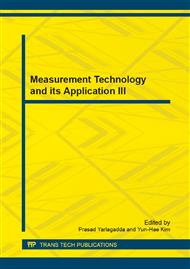p.1774
p.1778
p.1785
p.1790
p.1794
p.1801
p.1811
p.1816
p.1820
Numerical Investigation of Liquid Parameters Effect on the Oscillation of Cavitation Bubble
Abstract:
Cavitation is a common harmful phenomenon in hydraulic transmission systems. It not only damages flow continuity and reduces medium physical performance, but also induces vibration and noise. At the same time, the efficiency of a system is reduced due to cavitation, especially dynamic performance are deteriorated. Applying commercial CFD software FLUENT, the cavitation issuing from the orifice was numerically investigated, reducing the harm. The effect of liquid parameters (such as surface tension, gas content, and the temperature) on the oscillation of bubble is studied numerically. The modified Rayleigh-Plesset equations are presented to describe the oscillation of bubble in different liquids. Employing the finite difference calculus, the behavior of a cavitation bubble in liquids with different physics parameters are obtained. Meanwhile, the numerical results are compared with experiment results. It is observed that the viscous force decreases the growth and collapse of a bubble, making it expand or collapse less violently. And the surface-tension forces stave bubble growth progress and speed up bubble collapse process. On the other hand, both the maximum bubble radius and bubble lifetime increase with increasing temperature. These results can provide theory basis for understanding cavitation bubble dynamics in the hydraulic systems.
Info:
Periodical:
Pages:
1794-1800
Citation:
Online since:
June 2014
Authors:
Price:
Сopyright:
© 2014 Trans Tech Publications Ltd. All Rights Reserved
Share:
Citation:


